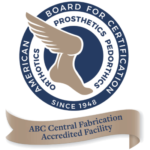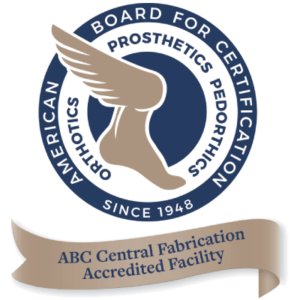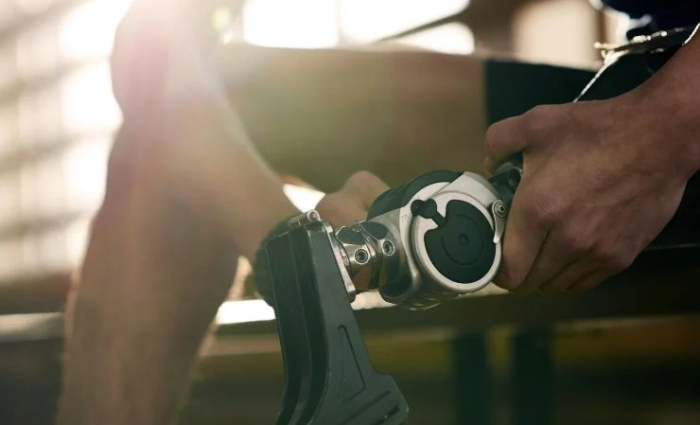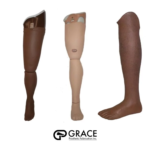What does the future have in store for central fabrication of prosthetics and orthotics?
Central fabrication has come a long way from when it started. Over the years, new inventions and innovations have helped improve process efficiencies and provide more customization capabilities for manufacturers. For example, computer-aided design and manufacturing (CAD/CAM) technologies have become standard tools to create digital models for prosthetics and orthotics.
Given this context, the question now is where the central fabrication industry is headed. How does the future of orthotic and prosthetic fabrication look? How will Industry 4.0 technologies continue to transform manufacturing processes? Read on to find out more about the future of central fabrication.
3D Printing
3D printing is no stranger to the manufacturing industry. Central fabricators have already jumped on the bandwagon to utilize this technology in creating custom devices tailored to patients’ requirements—minus the high costs or long lead times.
Nonetheless, this technique is still relatively new to central fabrication, so it still has the potential to be unlocked. Some also remain skeptical about whether 3D-printed prosthetics and orthotics are as durable and reliable as those made with conventional processes. However, regardless of these points, there is no denying that 3D printing is here to stay.
Undoubtedly, 3D printers have revolutionized orthotic and prosthetic fabrication by making custom devices affordable for patients. They also allow you to create a custom prosthetic design and modify even the most delicate details to match a person’s body and measurements. Thus, you can give patients prosthetics and orthotics with a natural fit and appearance to enhance comfort.
Beyond all these, it’s worth noting that 3D printers are constantly improving, so they will likely have more high-tech functionalities over time. In addition, you can expect even better prosthetics and orthotics with more personalized designs to increase patient comfort.
3D Scanning
Like 3D printing, 3D scanning has also revolutionized processes in central fabrication. This process replaces the traditional plaster cast, which is known to be expensive, time-consuming, and labor-intensive. Instead, it offers cost and time savings to help manufacturers create accurate devices more quickly.
While 3D scanning has been beneficial in the whole industry, it has been especially useful in designing and fabricating orthotics for feet. Using 3D scanners, you can get a 3D model of the patient’s foot and collect accurate measurements. Studies have also found that 3D scans even yield more precise data than a digital caliper!
With this, 3D scanners have been pivotal in creating custom-made prostheses and orthoses that fit a patient comfortably. They have also made the fabrication process more efficient, given that digital scans reduce the risk of error and prevent the need for shipping. Likewise, when a patient needs a new orthosis, you do not need to produce a new scan since you can refer to the previously stored files.
Artificial Intelligence and Machine Learning
Artificial intelligence (AI) and machine learning have played a considerable role in improving the quality of life for people with disabilities. For example, orthotic and prosthetic fabrication help interpret signals from a patient’s muscles to give them greater control over the device.
Traditionally, prosthetics have helped allow amputees to restore motor function and go about their daily routines. However, one central pain point was the lack of sensory information and feedback from these devices. Essentially, patients cannot touch or feel while using their prostheses, making it difficult to perform certain activities.
Given this, researchers have been exploring AI and machine learning algorithms as a potential solution to the problem. For instance, early in 2021, researchers from Florida Atlantic University worked on creating a prosthetic hand that could feel. They incorporated liquid metal tactile sensors into the fingertips and used machine learning to detect different speeds and textures while sliding each finger across a textured surface.
Of course, more studies still need to be conducted to understand how you can incorporate these smart technologies into central fabrication. However, the findings have been very promising for the future of prosthetic fabrication so that patients can have a more realistic experience while using their devices.
Neural Connections
In recent years, experts have been dabbling in neural connections to figure out how they could create prosthetics that move and feel like a natural limb. The idea here is to connect the prosthetics to a patient’s brain so that they can control the device with their mind—similar to how you usually control your limbs.
One prominent example of how this works can be found in a study done by researchers in Sweden. They observed patients who used mind-controlled arm prosthesis in their daily lives for about seven years. This prosthesis was different because it involved implanting electrodes into the nerves and brain to help the patient control the device more effectively.
Based on the study, the researchers found that the implanted electrodes allowed patients to control and feel sensations in the prosthesis. Here’s how it works: when the electrodes pick up a signal related to what the patient wants to do with their hand, the signal goes through an AI algorithm to tell the prosthetic what to do.
With this groundbreaking discovery, many others have turned their attention to the neural space, as they believe that this is where the future of prosthetics lies. And this should come as no surprise, given that technologies like 3D printing and AI have already become well-integrated into different processes in the industry.
Build High-Quality Prosthetics and Orthotics with Grace’s Team Today
As you can see, the central fabrication industry continues to advance as more technologies and innovations come into the picture. Today, manufacturers emphasize functionality and aesthetics to provide the best comfort and fit for patients. At Grace Prosthetic Fabrication, you can expect nothing less.
We use the latest industry technologies to create quality and comfortable prosthetics and orthotics. You can rest assured that we stay up-to-date with all the innovations to give your patients the best possible devices to help them in every way possible. Get in touch with us at 1-800-940-5347 to discuss it with our team.






